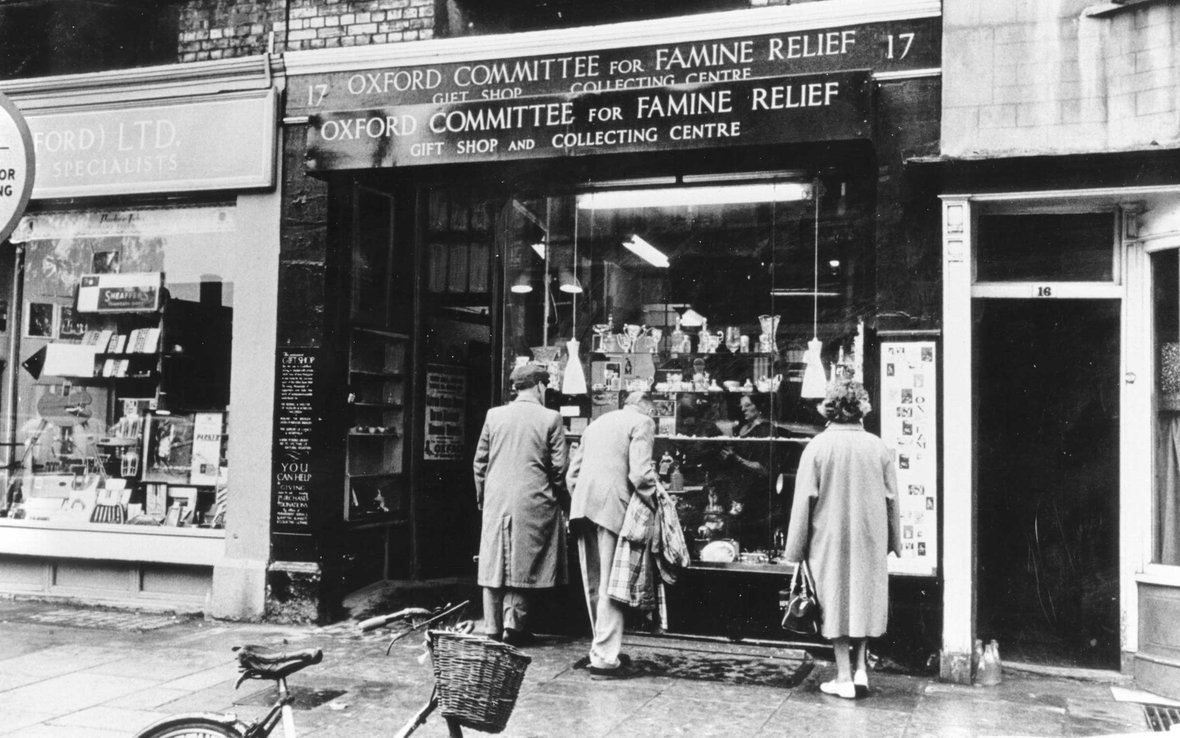How sustainability impacts the charity shop business

2020 saw more second hand shoppers than ever before with 70% of women choosing thrifty shopping compared to just 45% four years prior. Gen-Z is powering the change with 40% of under 24’s buying second hand as often as possible, often due to the pledge many young people have taken to reduce their impact on the planet.
We’re seeing a move away from the throwaway culture of fast fashion as people become more educated on the industry’s issues. In an industry producing more carbon per minute than a car would driving around the world six times, and in a trend-driven culture that drives £140 million of clothing to landfill each year, people are rightfully taking conscious steps to practise sustainable buying.
There are a myriad of ways to update your wardrobe without causing environmental damage; using clothing rentals, swapping items with friends, upcycling old pieces, buying from sustainable brands such as Lucy&Yak or House of Sunny, but by far the easiest and cheapest swap is to replace the high street store for a local charity shop.

The UK’s first charity shops appeared during the 19th century when The Salvation Army opened up second hand clothing stores to provide the urban poor with cheap clothing. The outbreak of WW2 saw stores pop up to generate money for the war effort and, after the fighting, donations flooded in to raise money for victims and allow the public to re-furnish their homes at low cost.
Through the first half of the 20th century charity shops were mainstream sources of clothing and household items for low-income families. Some stores began selling goods made by people with disabilities to offer support, and many employed disabled people, and still do, boosting employment rates. At this time, reforms were battering down the income of the working class population and charity shops were vital in offering affordable household necessities. But as the post-war economy recovered, the stigma of shopping in charity stores grew. Fast-fashion retailers started dominating the highstreet and allowed more people to buy fashionable items. Though these brand new items seemed reasonably priced to many, it was, and still is, more affordable for working class people to buy higher quality items second hand.
The classist views that once shamed those buying second hand have now done a complete 180 turn around. As second hand shopping grows in popularity, charity shop prices rise. With stock now depleting quicker, those who can now only afford to buy from fast fashion retailers are sneered at for not buying sustainably.
The fashion industry thrives on consumerist ideals. Seasonal trend changes fuel the notion that people need new clothing all the time. This is the underlying factor contributing to the unsustainability of the fashion industry. The fast turnover of new trends is the petrol on an already exploding problem. The consumerist culture of “now, now, now” leaves brands taking backstreet paths to source clothing as quickly as they can – however they can – in order to appeal to shoppers.
If these same values are carried over into second hand shopping and consumers continue buying at the same rate in second hand stores, the problem continues. One charity shop worker told us, “The thing about charity shops is that they’re so cheap, higher income demographics can’t say no and end up being less picky about whether to buy an item or not because of the price”. Charity shops cannot sustain such a fast buying rate, relying solely on donations and often having to scrap poor-quality items from donors who want to rid themselves of unwearable items.
A huge issue surrounding the popularisation of second-hand shopping is that those who can actually afford to buy from sustainable brands are choosing to hop on the charity shop ‘trend’ instead. Youtube is crammed to the brim with thrifty shopping hauls where many share the huge loot they have curated after their shopping sprees. There are even thrift shopping challenges, like the somewhat demeaning ‘ugly thrift store challenge’. It’s videos like these that take advantage of the cheapness of these second hand stores in order to gain views without actually addressing the importance and necessity of these stores for many low-income people.

The growing public interest in charity shopping hasn’t gone amiss. With the insight of charity shop workers, ranging from floor staff to those in administration, we can build a picture of the new business driven model that many charity shops now run under. Spoiler alert, it’s a far cry from the community origins these stores built their reputations on.
One contact recounted a time when she donated some designer clothing to her local store only to be told her donations would be sent to one of their boutiques in London to fetch a higher price. The way charity shops are run here in the UK, with store profits funding their local area only, her donations would not support those where she lives.
Stores are closed when they fail to hit weekly selling targets. If there isn’t an adequate profit being made by a store, the local community loses the shop and the opportunity to buy necessary items. In order to reach these targets, item prices are increased and stores are re-designed to entice higher-income consumers into a purchase. Companies are even going as far to hire administrative staff with high street retail backgrounds to give insight on increasing turnover; adopting retail driven objectives with a focus on aesthetic appeal – “We want to draw people in, we want them to buy” one worker echoed.
Workers from one store, branded as a ‘boutique’, told of strict rules they follow to keep the store looking ‘attractive’; colour blocking clothes, re-doing window displays weekly, and turning around stock quickly to keep the store looking fresh and customers coming back. These rules mean longer hours and more pay for workers which in turn pushes up prices to now cover that cost.

The profitability of charity shops has been realised, leading to a clear shift within the sector. From once being a necessity for low-income families, now the stores are profit driven enterprises. Though there are upsides to this new focus, such as cleaner and less oppressive environments in which to shop, governing the affordability and accessibility of charity shops is vital to keep stores serving the communities relying on them the most.
As people have set their sights on second hand buying being the major driving force in reducing fast fashion consumption, charity shops have naturally become the cheapest and easiest way to do so. But people need to be conscious of their buying habits. If your jeans don’t fit how you like, donate them and look in that store for a new-to-you pair. It is integral to consider your actions. Be conscious of the way you are buying, don’t let yourself be ignorant to issues just because you want a bunch of new clothes.
Discover more from GUAP’s Fashion section here




![ZINO VINCI’S ‘FILTHY & DISGUSTING’EP BRINGS YOU TO THE CORE OF THE ARTIST [@ZinoVinci]](https://guap.co/wp-content/uploads/2023/10/Zino-4.jpg)



